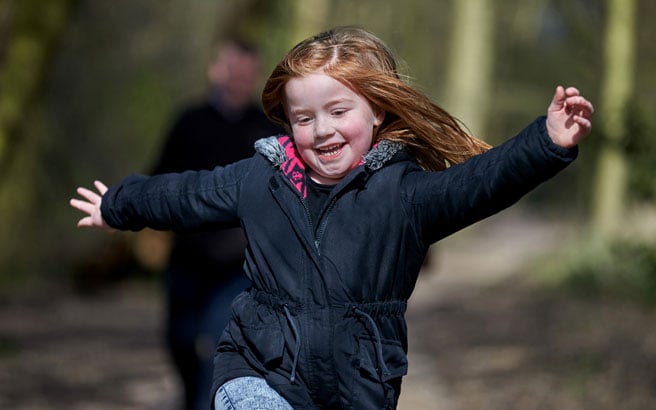Understanding how early years affect cancer risk in adulthood
On this page
Within our Global Cancer Update Programme (CUP Global), our research has tended to focus on adult populations – how the things that we do as adults (for example what we eat) are associated with cancer risk. Because of this, we don’t know enough about how our younger years (from birth to early adulthood) influence our risk of a cancer developing (incidence).
Our goal is to change this with our lifecourse research. We aim to better understand how different life stages, and exposure to different risk factors at different times in our life, influence cancer risk. We can also explore whether there are critical windows during our lifetime that affect cancer risk – and explore interventions specific to particular stages of life. In short, by investigating factors in our early years (for example, body weight in childhood) and cancer outcomes in adulthood we can better understand how diet, nutrition, physical activity and body weight, throughout our lives, affect our cancer risk.
A novel and challenging area of research
One of the reasons that research has not tended to look at our early years is that the timeline for a cancer developing is often several decades, with many factors contributing. This has significant implications for research. It is often not practical (expensive and time consuming) to follow individuals from childhood through to adulthood, but some birth cohort studies have begun to do so.
Studies of human populations have also begun to explore our early years and future cancer risk, for example, by having adults recall their early life as part of a cohort study. Advances in science mean we can use data from multiple sources and from our genes.
The result is that we are better able to understand:
- the biology behind cancer
- how our behaviour affects cancer risk as we age
- whether there are critical timepoints in our lives that influence cancer risk
- how our environment alters our cancer risk
But there is still a lot scientists don’t know about early years and cancer in adulthood.
We have published a paper about the challenges and opportunities that lifecourse research gives us in terms of being able to understand how our early years impact our cancer risk.
Ongoing lifecourse research in CUP Global
Our lifecourse research explores the following areas:
- Early life anthropometry (birthweight and length, and body weight in childhood, adolescence and young adulthood) and colorectal cancer risk in adulthood (read more).
- Early life anthropometry (birthweight and length, and body weight in childhood, adolescence and young adulthood) and breast cancer risk in adulthood.
- Early life alcohol consumption and breast cancer risk in adulthood.
- Factors that influence age at menarche (first period or first-time menstruating) and when puberty occurs.
Methods used in our lifecourse research
Lifecourse research exploring early life exposures and cancer risk later in life is a relatively new area of investigation. To explore this area, we are collaborating with a team of researchers at Wageningen University and Research (WUR).
Within each area mentioned above, the team at WUR undertook a systematic literature review of the published evidence. They used a similar process to the one used across CUP Global. Using a systematic literature review and meta-analysis approach means that researchers can better explore the whole body of evidence related to a particular exposure and cancer outcome. A meta-analysis approach also means that the results of multiple studies can be assessed at the same time and incorporated into a single result (point estimate).
A key part of understanding how a particular factor may affect cancer risk is understanding the biological mechanisms behind the results we find in studies of human populations. This helps scientists understand if an exposure causes a cancer to occur. To explore this area of research, we collaborate with the International Agency for Research on Cancer (IARC) to undertake reviews of the literature about cancer-related biological mechanisms.
The methods and results of each study, as well as the mechanisms evidence, were then presented to our CUP Global Panel. The Panel interpreted the results, and assessed the strength of the evidence, using our pre-defined grading criteria.
> More information about our process for judging the evidence and our grading criteria
Latest papers and publications

Overview of the evidence
In May 2025, the first paper on our collaborative lifecourse research was published by the International Journal of Cancer: Early-life anthropometry and colorectal cancer risk in adulthood: Global Cancer Update Programme (CUP Global) systematic literature review and meta-analysis of prospective studies.
The study looked at associations between early life exposures related to birthweight, birth length, body mass index (BMI) and changes in BMI in childhood, adolescence and young adulthood, and risk of developing colorectal cancer in adulthood.
The review informing this work was funded by Wereld Kanker Onderzoek Fonds (WKOF) through a CUP Global collaboration with Wageningen University and Research.
Results
In total, 37 published studies were included within the review. The researchers found that most studies used a measure of BMI to evaluate the links between body size and colorectal cancer.
The results below demonstrate that increased birthweight and body size in childhood, adolescence and young adulthood are linked with future colorectal cancer risk:
- Each 1kg increase in birthweight was associated with a 9% increased colorectal cancer risk.
- For children (2–9 years), each 1 standard deviation increase in BMI was associated with an increased risk of developing colon cancer (a portion of the bowel).
- For adolescents (10–19 years), each 1 standard deviation increase or each 5kg/m² increase in BMI was associated with a 5–18% increased colorectal cancer risk.
- For young adults (18–25 years), each 5kg/m² increase in BMI was associated with a 12% increased colorectal cancer risk.
Standard deviation is a way for researchers to understand the variance or spread of a dataset. Within this study, a 1 standard deviation increase means an increase above the average (mean) BMI of the whole study population. Simply put, the study found that, as BMI increased, so too did the risk of colorectal cancer.
Our Panel assessed and judged the above results, using our pre-defined grading criteria. They concluded that the evidence was “strong probable” and suggests a causal association.
Further reading
Published peer-reviewed paper(s):
Our lifecourse concepts paper details many of the key themes in lifecourse cancer research: Lifecourse research in cancer: context, challenges, and opportunities when exploring exposures in early life and cancer risk in adulthood
Research protocols:
The team at WUR have published 2 protocols:
- Nutrition, physical activity and body size in early life and risk of colorectal cancer: a systematic review
- Anthropometry in early life and risk of female breast cancer: World Cancer Research Fund Systematic Literature Review and Meta-analysis
On the blog
Deeper dive into cancer across the lifecourse from our research and policy teams


